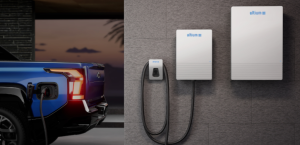By Jeff Sanford
Toronto, Ontario — March 13, 2018 — In this week’s Tuesday Ticker, Akzo releases earnings, Fenix shareholders to vote on deal, Global business outlook dims, and much more.
AkzoNobel
AkzoNobel announced improved results for 2017 and reconfirmed its financial guidance for 2020. The company also reiterated its previously announced plans to split off its specialty chemicals business and create two separate companies (a move agreed to during the recent unsuccessful unsolicited takeover battle this past summer). According to the company the separation of Specialty Chemicals is on track for April 2018. For accounting purposes Akzo now reports Specialty Chemicals business under the ‘discontinued operations’ category. Akzo management also reported that revenue, including discontinued operations was up three percent at €14.5 billion. Earnings including discontinued operations were up two percent to €1,5 billion. Net income attributable to shareholders was €832 million (2016: €970 million). The total dividend per share proposed for 2017 is €2.50. This is up 52% from the €1.65 paid to shareholders in 2016. The company also reconfirmed its optimistic financial projections for 2020, which suggests that the Paints and Coatings division will generate a 25% return on investment, while Specialty Chemicals will generate a return on investment of about 20%. Within the divisions AkzoNobel reported that Paints and Coatings divisions revenue was up two percent, mainly due to volume growth and acquisitions. The total volume of business was two percent higher as well.
The CEO of Akzo, Thierry Vanlancker was quoted as saying, “In 2017 we delivered another year of increased [earnings] with revenue growth for all business areas, driven by a combination of higher volumes and bolt-on acquisitions. We are taking various measures amongst which cost control to deal with industry-wide headwinds, including higher raw material costs and challenges for the Marine and Protective Coatings business.” Vanlancker went on to note the many acquisitions the company has made of late. Other notable events at the company this past year include being ranked number one on the Dow Jones Sustainability Index. “During the year, we put particular emphasis on increasing our energy efficiency, reducing material waste and continuing to deliver more eco-premium solutions for our customers,” said Vanlancker. The CEO conformed the comping split in the company scheduled for this spring. “We are on track to create two focused, high performing businesses. The internal separation of the Specialty Chemicals business is complete and a full separation remains on track for April 2018. The transformation of AkzoNobel into a focused Paints and Coatings company is progressing well, with phase one on track to achieve €110 million savings in 2018, contributing directly towards delivering the 2020 financial guidance,” said Vanlancker.
The company also predicted that one of the ‘headwinds’ experienced during 2017–higher raw material costs and adverse effects from foreign currency–are projected to continue in 2018, especially during the start of the year. “Trends for Performance Coatings are expected to be positive for most segments and regions, while still challenging for Marine and Protective Coatings,” said Vanlancker. “We continue to implement various measures to mitigate current market challenges, including increased selling prices and cost discipline.” Akzo also mentioned in its press release the release of its Carbeat app for collision repair techs. According to Akzo management, “Customers at automotive body repair shops can now save time and money thanks to an industry first digital solution introduced by AkzoNobel Vehicle Refinishes business. Carbeat provides significant benefits by giving a real-time overview of the repair process. The application is deployed on a large touch screen monitor, designed to make using the system quick and intuitive, while providing a comprehensive overview of all the work in production.”
Royal Bank of Canada released its latest economic outlook. According to bank economists, after a year of rapid growth the Canadian economy is expected to slow in 2018 as interest rates rise and consumer spending falls. Gross domestic product will slow to 1.9 percent in 2018, followed by 1.6 per cent in 2019. This is compared to growth of three percent in 2017. Craig Wright, senior vice-president and chief economist at RBC, was quoted saying, “Following a 3.5 percent increase in consumer spending in 2017 we anticipate that rising interest rates will take their toll on indebted Canadians throughout 2018. But a healthy labour market and rising wages will help soften this blow. While the Canadian consumer reins in their spending, we expect business investment and government outlays to contribute more significantly to the economy.” RBC economists expect the Canadian dollar to appreciate through 2017, though, NAFTA-related uncertainty could have effects on the dollar. RBC expects the dollar to strengthen to 82 cents by end of 2018.
Another economic report this weeks notes that gross domestic product growth rates in the three largest advanced economies — the U.S., EU and Japan — have all slowed and turned down. In all three of these regions GDP growth peaked in the second or third quarter of 2017, and have now fallen in the fourth quarter. There are worries this could be the start of a synchronized global downturn.
One bit of positive economic news in the U.S. this year: The bonus checks that major auto OEMs will hand out to employees this year will help bolster consumer spending. Over the past couple weeks the major OEMs in North America have announced large profit-sharing payouts to employees. The profit sharing payments are written into employment contracts. At General Motors 50,000 UAW employees will receive profit-sharing cheques of up to $11,750 this year. Along with coming income-tax refund checks these cash payments could help extend the current growth cycle in the U.S. economy.
Fenix
Fenix Parts has announced it will hold a special stockholders meeting on April 9, 2018, to vote on a proposed acquisition by the Stellex Capital Management. Fenix announced this past week that information regarding the vote has been mailed to stockholders of record as of the close of business on February 27, 2018. Under the terms of the merger agreement, if approved by the stockholders, each Fenix Parts stockholder would be entitled to receive $0.40 per share in cash of the new entity. The special meeting of stockholders will be held on April 9, 2018, at 9:00 a.m., Central Time at Two Westbrook Corporate Center, Conference Center, Westchester, Illinois. Stockholders of record may vote by attending the special meeting in person, by accessing the internet site listed on the proxy card, or by telephone.
State Farm
Major insurer State Farm released financials last week. The company indicated the business made $2.8 billion more in premiums, but also cut auto claims and loss adjustment expenses by $1.6 billion. The company also noted that, “Underwriting expenses like overhead, agents and ads grew by $200 million from 2016’s $10 billion.” Overall, the entire State Farm property and casualty business lost $1.7 billion, up from a loss of $1.2 billion in 2016. According to its financials State Farm earned $41.6 billion in auto insurance premiums and paid out $34.2 billion in claims in 2017 versus $38.8 billion in premiums and $35.8 billion in claims in 2016.
3M
On Monday 3M named the company’s current chief operating officer, Michael Roman, as the company’s next chief executive. The current CEO, Inge Thulin, will become executive chairman of the board when Roman becomes CEO in July.
Crude Oil
China’s crude oil imports in January rose 20 percent over the same period a year ago to a record 40.64 million tonnes, or 9.57 million barrels per day (bpd). The data comes from the General Administration of Customs. This is higher than the 7.94 million barrels per day (bpd) imported in December and beats the previous record set in March 2017 of 9.17 million barrels per day. China has been the world’s largest importer of crude oil for some time now. The country overtook that spot from the U.S. as China emerges as the world’s largest auto market. The amount of crude it is importing is rising rapidly. This is due to the fact that the Chinese are the world’s single largest buyers of cars. As well, the country’s oil production fields (like Daqing) are in long-term decline. China also announced this past week it is finally going to launch a crude oil futures contract on March 26 that is priced in the Chinese currency, the yuan. This will facilitate a move away from the U.S. dollar as the settlement currency for all oil sales. The move will see the U.S. dollar continue to move away from its place as the single currency backing the crude oil market. This could eventually see oil cost more in the U.S. as demand for U.S. dollars decreases.





































